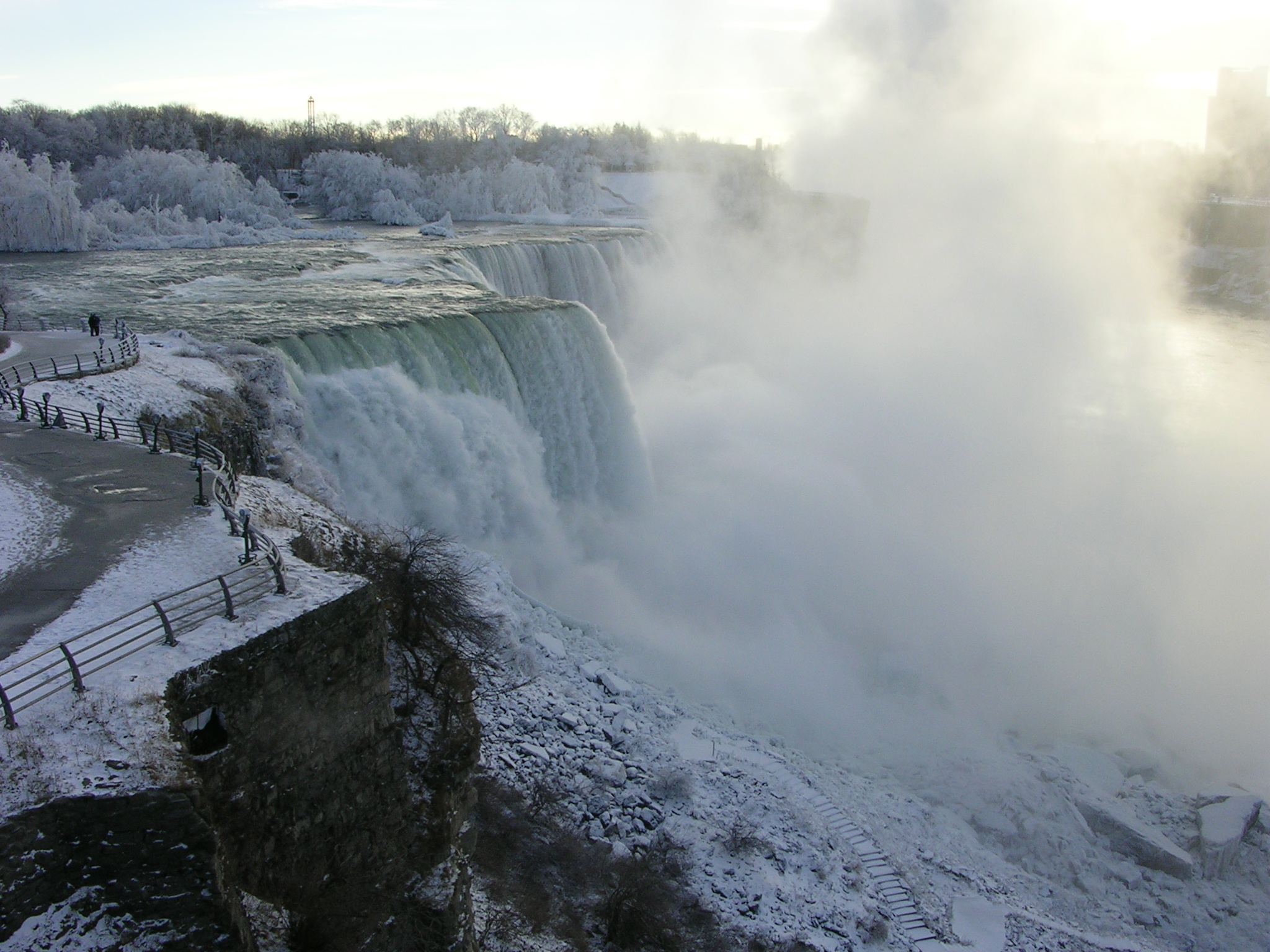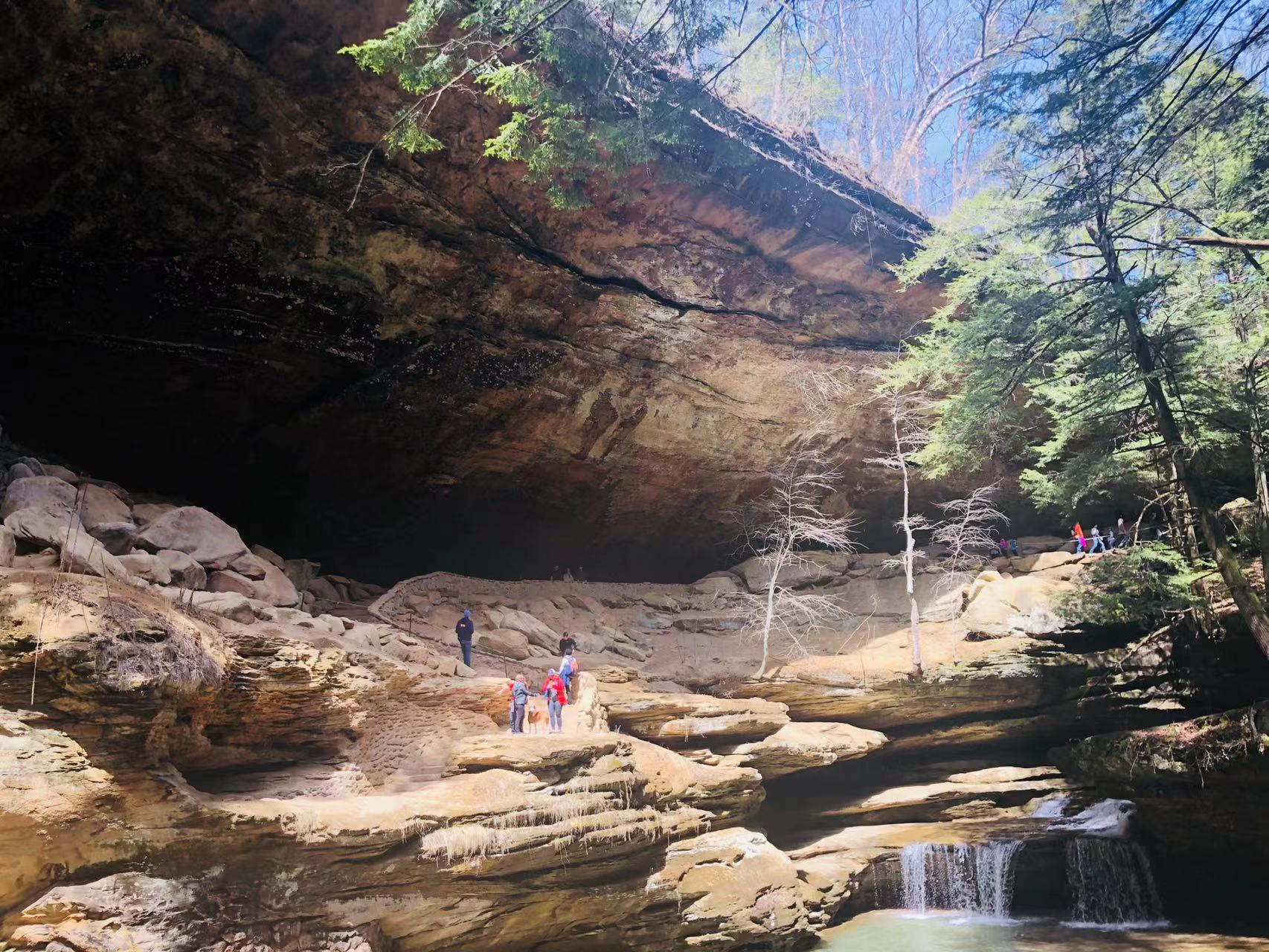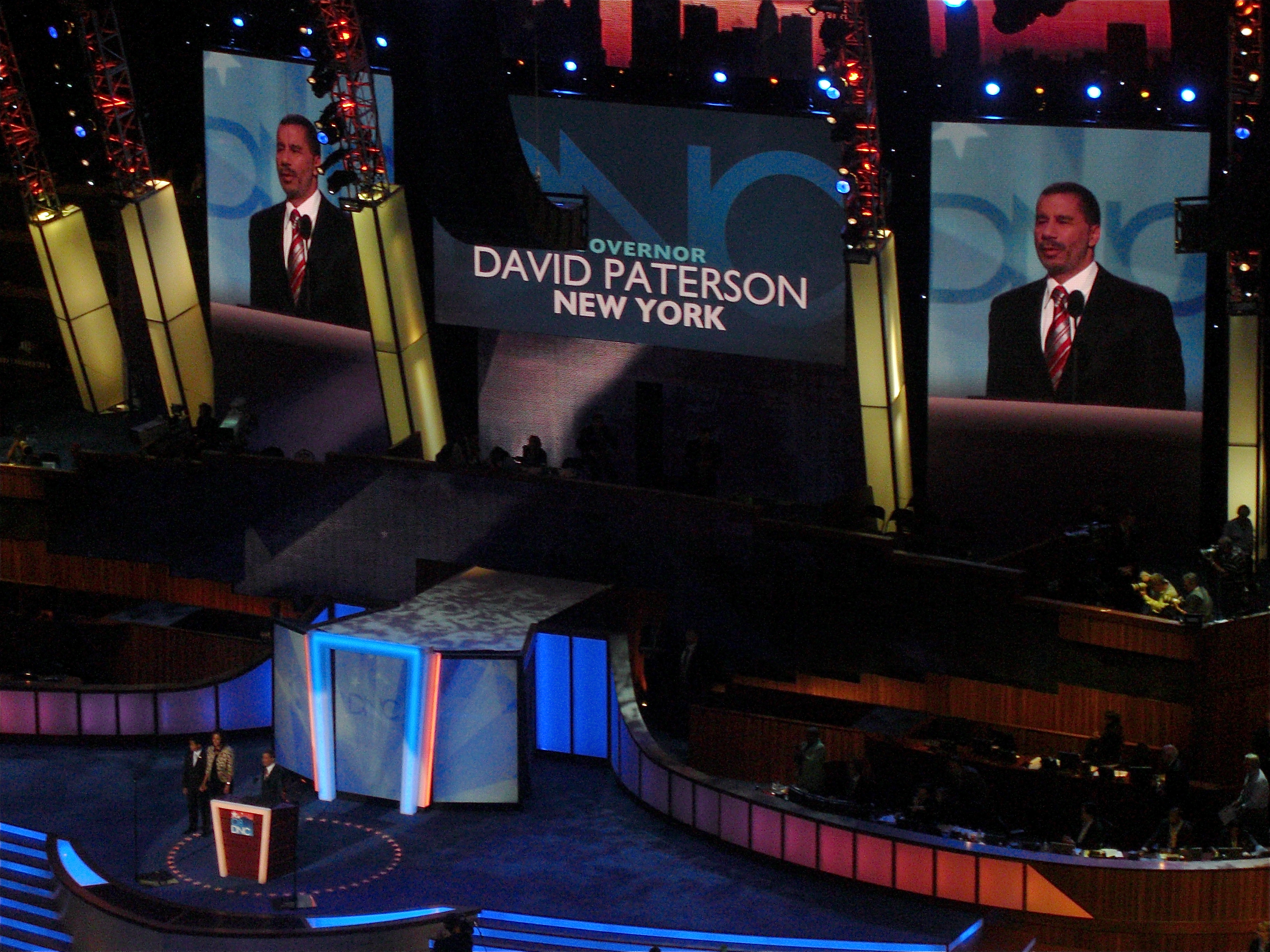|
Riverbank State Park
Riverbank State Park is a state park built on top of a sewage treatment facility on the Hudson River, in the New York City borough of Manhattan. It was opened in 1993. On September 5, 2017, it was renamed Denny Farrell Riverbank State Park, after a longtime New York State Assembly member who represented the surrounding area. Park facilities Riverbank State Park was designed by Dattner Architects and Abel Bainnson Butz Landscape Architects and opened May 27, 1993. The original idea for a park atop the sewage plant was Philip Johnson's, who proposed a series of decorative fountains and a reflecting pool. Community opposition forced further proposals for a park design that was useful to the surrounding community. Gruzen Architects made a design proposal in 1969, and Bond Ryder/Lawrence Halprin made another proposal in 1973-1975. Some iterations of the design included fully decking over the West Side Highway to create a continuous park. All of these designs were unfeasible, how ... [...More Info...] [...Related Items...] OR: [Wikipedia] [Google] [Baidu] |
List Of New York State Parks
This is a list of state parks in the U.S. state of New York (state), New York. Also listed are state golf courses, seasonal hunting areas, and ''former'' state parks. In New York, state parks are managed by the New York State Office of Parks, Recreation and Historic Preservation, Office of Parks, Recreation and Historic Preservation (OPRHP), with the exception of the Adirondack Park, Adirondack and Catskill Parks which are managed by the New York State Department of Environmental Conservation, Department of Environmental Conservation (DEC). Outside of the Adirondacks and the Catskills, the state parks department is organized into eleven regions: *Niagara *Allegany *Genesee *Finger Lakes *Central *Taconic *Palisades *Long Island *Thousand Islands *Saratoga/Capital District *New York City Forest preserve The largest parks in New York are the Adirondack Park, at ; and the Catskill Park, at . Together they comprise the New York Forest Preserve, properties that must be kept "Forever ... [...More Info...] [...Related Items...] OR: [Wikipedia] [Google] [Baidu] |
State Park
State parks are parks or other protected areas managed at the sub-national level within those nations which use "state" as a political subdivision. State parks are typically established by a state to preserve a location on account of its natural beauty, historic interest, or recreational potential. There are state parks under the administration of the government of each U.S. state, some of the political divisions of Mexico#States, Mexican states, and in Brazil. The term is also used in the Australian states of template:state parks of Victoria, Victoria and state parks of New South Wales, New South Wales. The equivalent term used in Canada, Argentina, South Africa, and Belgium, is provincial park. Similar systems of local government maintained parks exist in other countries, but the terminology varies. State parks are thus similar to national parks, but under state rather than federal administration. Similarly, local government entities below state level may maintain parks, e.g., r ... [...More Info...] [...Related Items...] OR: [Wikipedia] [Google] [Baidu] |
Caisson (engineering)
In geotechnical engineering, a caisson ( or ; borrowed from French ''caisson'', from Italian ''cassone'', meaning ''large box'', an augmentative of ''cassa'') is a watertight retaining structure used, for example, to work on the foundations of a bridge pier, for the construction of a concrete dam, or for the repair of ships. Caissons are constructed in such a way that the water can be pumped out, keeping the work environment dry. When piers are being built using an open caisson, and it is not practical to reach suitable soil, friction pilings may be driven to form a suitable sub-foundation. These piles are connected by a foundation pad upon which the column pier is erected. Caisson engineering has been used at least since the 18th century, and was notably used in the construction of the Brooklyn Bridge, which was completed in 1883. Types To install a caisson in place, it is brought down through soft mud until a suitable foundation material is encountered. While bedrock is pref ... [...More Info...] [...Related Items...] OR: [Wikipedia] [Google] [Baidu] |
Manhattan Waterfront Greenway
The Manhattan Waterfront Greenway is a waterfront greenway for walking or cycling, long, around the island of Manhattan, in New York City. The largest portions are operated by the New York City Department of Parks and Recreation. It is separated from motor traffic, and many sections also separate pedestrians from cyclists. There are three principal parts — the East, Harlem and Hudson River Greenways. Components Hudson River Greenway The Hudson River Greenway is the longest greenway in Manhattan, running along the West Side, from Battery Park in the south -- mostly through Hudson River Park, Riverside Park, and Fort Washington Park -- to Dyckman Street in the north. A gap in West Harlem was filled in early October 2008 with the opening of the Harlem Piers bike lane. A roughly 10-block detour in the west 80s, where a walkway had crumbled into the river in the late 20th century, was eliminated on May 20, 2010, when the rebuilt section of greenway was opened. The Hudson ... [...More Info...] [...Related Items...] OR: [Wikipedia] [Google] [Baidu] |
Hamilton Heights, Manhattan
Hamilton Heights is a neighborhood in the northern part of Manhattan in New York City. It is the northernmost part of the West Harlem area, along with Manhattanville and Morningside Heights to its south, and it contains the sub-neighborhood and historic district of Sugar Hill. Washington Heights lies to Hamilton Heights' north, and to its east is Central Harlem. Hamilton Heights is bounded by 135th Street to the south, Riverside Drive to the west, 155th Street to the north, and Edgecombe Avenue and Saint Nicholas Avenue to the east. The community derives its name from Founding Father Alexander Hamilton, who lived the last two years of his life in what is now the Hamilton Grange National Memorial, back when Upper Manhattan was mostly farmland. Hamilton Heights is part of Manhattan Community District 9, and its primary ZIP Codes are 10031, 10032, and 10039. It is patrolled by the 30th Precinct of the New York City Police Department. Demographics Based on data from the 2 ... [...More Info...] [...Related Items...] OR: [Wikipedia] [Google] [Baidu] |
Parks In Manhattan
A park is an area of natural, semi-natural or planted space set aside for human enjoyment and recreation or for the protection of wildlife or natural habitats. Urban parks are green spaces set aside for recreation inside towns and cities. National parks and country parks are green spaces used for recreation in the countryside. State parks and provincial parks are administered by sub-national government states and agencies. Parks may consist of grassy areas, rocks, soil and trees, but may also contain buildings and other artifacts such as monuments, fountains or playground structures. Many parks have fields for playing sports such as baseball and football, and paved areas for games such as basketball. Many parks have trails for walking, biking and other activities. Some parks are built adjacent to bodies of water or watercourses and may comprise a beach or boat dock area. Urban parks often have benches for sitting and may contain picnic tables and barbecue grills. The large ... [...More Info...] [...Related Items...] OR: [Wikipedia] [Google] [Baidu] |
State Parks Of New York (state)
State may refer to: Arts, entertainment, and media Literature * ''State Magazine'', a monthly magazine published by the U.S. Department of State * ''The State'' (newspaper), a daily newspaper in Columbia, South Carolina, United States * ''Our State'', a monthly magazine published in North Carolina and formerly called ''The State'' * The State (Larry Niven), a fictional future government in three novels by Larry Niven Music Groups and labels * States Records, an American record label * The State (band), Australian band previously known as the Cutters Albums * ''State'' (album), a 2013 album by Todd Rundgren * ''States'' (album), a 2013 album by the Paper Kites * ''States'', a 1991 album by Klinik * ''The State'' (album), a 1999 album by Nickelback Television * ''The State'' (American TV series), 1993 * ''The State'' (British TV series), 2017 Other * The State (comedy troupe), an American comedy troupe Law and politics * State (polity), a centralized political organizatio ... [...More Info...] [...Related Items...] OR: [Wikipedia] [Google] [Baidu] |
David Paterson
David Alexander Paterson (born May 20, 1954) is an American politician and attorney who served as the 55th governor of New York, succeeding Eliot Spitzer and serving out nearly three years of Spitzer's term from March 2008 to December 2010. A member of the Democratic Party, he is the first legally blind person to be sworn in as governor of a U.S. state, and is the first African American governor of New York. Following his graduation from Hofstra Law School, Paterson worked in the District Attorney's office of Queens County, New York, and on the staff of Manhattan borough president David Dinkins. In 1985, he was elected to the New York State Senate to a seat once held by his father, former New York secretary of state Basil Paterson. In 2003, he rose to the position of Senate minority leader. Paterson was selected to be the running mate of Democratic gubernatorial nominee Eliot Spitzer in the 2006 New York gubernatorial election. Spitzer and Paterson were elected with 65% ... [...More Info...] [...Related Items...] OR: [Wikipedia] [Google] [Baidu] |
Maria Reidelbach
Maria Reidelbach is a local food activist who engages in social practice, interdisciplinary art and writing. Her current work is focused on food and agriculture in the Mid-Hudson Valley. Current projects include ''Stick to Local Farms'', an interactive map featuring local farms, ''The Yardavore'', a column about eating locally foraged and cultivated food, and the ''Stick to Local Farms Cookbook: Hudson Valley''. Practice Since 2003, Reidelbach has focused on interactive art and writing that engages the public. Past projects include ''Goofy Garden Golf'', ''Homegrown Mini-Golf'', the world's largest garden gnome and ''Valley of the Giants'', a community plan. As an artist, she cultivates an "interaction of art and life," bringing people together in public art projects, sometimes involving found objects and donations of materials, along with recycled items collected by dumpster diving through lower Manhattan. ''Stick to Local Farms'' comprises an annual map to over two dozen far ... [...More Info...] [...Related Items...] OR: [Wikipedia] [Google] [Baidu] |







